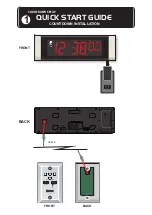
BYPASSING THE WATER CONDITIONING SYSTEM
1
2
3
B
A bypass should be installed on all water conditioning
systems. A bypass isolates the conditioner from the
water system and allows unconditioned water to be
used while the conditioner is undergoing service
or maintenance procedures or if the conditioner is
experiencing performance issues. Figures 1, 2, and 3
show the most common bypass methods.
Metal Bypass Valve
This type of bypass is located directly behind the
conditioner valve on top of the media tank. To bypass
the conditioner system using this type of bypass, turn
the handle on top of the bypass until the arrow on the
handle is pointing to the word BYPASS stamped on the
bypass valve body.
To return the conditioner system to regular service,
turn the bypass handle until the arrow on the handle is
pointing to SERVICE (see Figure 2).
Plastic Bypass Valve
This type of bypass is also located directly behind the
conditioner valve on top of the media tank. To bypass
the conditioner system using this type of bypass, turn
both of the small handles on the bypass until they are
in the position shown in Figure 3, perpendicular to the
inflow and outflow plumbing.
To return the conditioner system to regular service,
turn both of the small handles on the bypass back to
their original positions, parallel with the inflow and
outflow plumbing.
Manual Bypass
This type of bypass system is plumbed into the
pipes of the water system, and generally consists
of three valves: one on the inflow line going into the
conditioning system, one on the outflow line coming
out of the conditioning system, and one on the bypass
line connecting the inflow and outflow lines (See Figure
4).
To bypass the conditioner system using this type of
bypass (following Figure 4), open Valve 2 and close
Valves 1 and 3.
To return the conditioner system to regular service,
open Valves 1 and 3 and close Valve 2.
Figure 1 Metal Bypass Valve
Figure 2 Plastic Bypass Valve
Figure 3 Manual Bypass
6 •
FLECK
3200 Series Electromechanical Timer Owner’s Manual


























